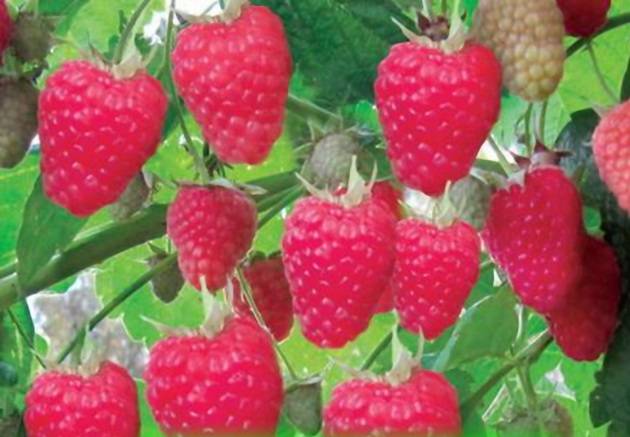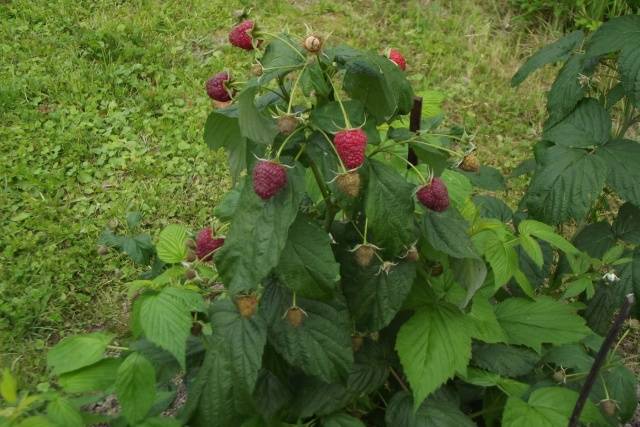Content
In recent years, remontant raspberry varieties have become widespread. They attract with their unpretentiousness, compact bushes and excellent taste. Descriptions of the Firebird variety raspberries, photos and reviews indicate its excellent species characteristics and popularity among gardeners.
The Firebird raspberry forms stems throughout the season and produces an excellent harvest of large, bright berries that form lush plumage on spreading bushes and attract with their beauty and aroma.
Description of the variety
Remontant raspberries are increasingly appearing in our gardens. While maintaining the beneficial properties of conventional varieties, it also has new, attractive qualities:
- resistance to common pathologies;
- the ability to bear fruit twice per season;
- greater adaptability to weather conditions.
One of the most popular varieties today is the remontant raspberry variety Firebird.
Due to their low spreading nature, raspberry bushes of the Firebird variety do not take up much space. They are formed from annual shoots that grow to almost 2 m per season. Therefore, it is recommended to tie raspberries to a support. Thanks to the ability to intensively form shoots, each Firebird raspberry bush forms up to several stems.The shoots up to the middle are covered with soft and thin thorns and green leaves with slight pubescence and a jagged edge.
Fruit shoots have a slight waxy coating and actively branch up to 2-3 branches. The variety is distinguished by its resistance to the most common diseases or pests.
Raspberry Firebird feels excellent in the climatic conditions of the middle zone, therefore it is highly valued by gardeners in the Central region. With proper care, it grows well in the southern regions. Other qualities of remontant culture are also attractive:
- shoots are characterized by a significant fruiting area - it occupies more than half the length of the stem;
- bright, conical-shaped fruits are distinguished by their dense structure and size, their weight reaches 4.5-6 g;
- the fruits have a glossy surface and juicy pulp, they are suitable for consumption fresh, frozen, and also after processing;
- This type differs from other remontant varieties in its sweeter taste - the sugar content of the berries is on average more than 5.5%, the ascorbic acid content is more than 40%;
- the yield from one bush can exceed 2 kg, more than 13-14 tons are obtained from 1 hectare;
- After ripening, the berries do not fall off the bushes for a long time and are not damaged during transportation.
The description of the Firebird raspberry also indicates some disadvantages, the main one being late ripening - the end of the summer season. In cold regions where frosts begin early, this can result in a loss of up to 30% of the crop. Too hot and dry summers also have an adverse effect - the result can be chopping of berries, their shedding, and loss of yield.However, with intensive irrigation or drip irrigation and mulching of the soil, the yields of Firebird raspberries can be even higher than those of conventional varieties.
Agricultural technology
Growing remontant raspberries of the Firebird variety is characterized by certain features that should be taken into account to obtain high returns.
Selecting a site for planting
The timing of planting Firebird raspberries depends on local climatic conditions:
- in the southern regions, autumn plantings are preferable;
- In colder regions, raspberry bushes will take root better in the spring, but they should be planted only after the end of the night frosts.
The site for planting bushes is selected taking into account certain parameters:
- it must be protected from the winds;
- sufficient illumination of the bushes is important;
- Firebird raspberries love fertile soils rich in organic compounds;
- groundwater should not rise above 1.5 m;
- if the soil is highly acidic, it is limed during digging;
- the territory of the site allocated for the raspberry garden must be thoroughly cleared of weed, it is especially necessary to remove rhizomes;
- When planting Firebird raspberries in spring, the site must be prepared in the fall - add organic and mineral fertilizers to the holes and sprinkle with soil.
Planting options
Repairing Firebird raspberries can be planted in different ways:
- with the bush method, a gap of up to 1.5 m is left between seedlings, and the row spacing should be at least 2.5 m;
- if planting is carried out using the trench method, then about 0.5 m is left between the bushes with the expectation that each seedling will produce 5-6 shoots;
- To avoid shading of the bushes, you need to arrange the rows of raspberries from north to south.
Landing
Before planting, Firebird raspberry seedlings are stored in a cool place at a temperature of 0 to +2 degrees so that the shoots do not begin to sprout. During transportation, their roots are kept in a clay mash to prevent them from drying out. Half an hour before planting, the roots of the seedlings are placed in water so that they are sufficiently saturated with water. When planting, seedlings are buried to the root collar.
Immediately after planting the Firebird raspberry, the following work must be carried out:
- trimming the above-ground part to 30 cm;
- watering seedlings - the norm is half a bucket for each bush;
- mulching the soil around raspberry seedlings - peat, straw, compost can be used as mulch; its layer should be at least 10 cm.
During autumn work, the mulch is dug up and embedded in the beds, becoming an additional feeding for the seedlings.
Trimming
Annual pruning of Firebird raspberries is mandatory - in the fall, two-year-old shoots are mowed down, leaving no stumps. Therefore, there is no need to cover raspberry bushes for the winter. When pruning in spring, diseased or damaged branches and weak shoots are removed. If the tops of the shoots are frozen, they need to be cut back to healthy buds. Raspberry fruits will be larger if you lightly trim the tops of the shoots. In cold regions, you can speed up the ripening time of the Firebird raspberry variety by covering the soil around its seedlings in spring. Using this technique, you can get a harvest of fragrant berries as early as July.
Annual raspberry shoots in the fall, before the onset of frost, bend to the ground, and the fallen snow cover will reliably preserve them until spring.
Garter bushes
The tall shoots of the Firebird raspberry curl and intertwine heavily, making them difficult to care for, so they definitely need support. It is desirable that it be high enough - the shoots should not exceed the height of the support by more than 20 cm. Otherwise, they will break under gusts of wind. 2-3 rows of wire are stretched between the supports with an interval of 15-20 cm, to which raspberry shoots are tied. The lowest row is installed at a height of about half a meter from the surface of the earth.
Top dressing
In early spring, when the snow melts, remontant Firebird raspberries need to be fertilized with nitrogen compounds, for example, urea. Nitrogen will give the plant the opportunity for rapid growth and development. Further, during the formation of ovaries, the bushes are fed with mineral salts.
Reviews
The Firebird raspberry variety has a lot of positive reviews due to its best qualities.
Conclusion
With proper agricultural technology, the remontant Firebird raspberry will become a magnificent decoration of the garden, delighting with high yields of juicy, fragrant berries




















